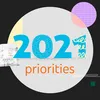The regulatory landscape
There’s another area that will be a significant focus in 2021 - regulation. We’ve benefited from partnerships with governments on critical issues, like preventing violent extremism and coordinated influence operations on our platform. Last year, these partnerships were incredibly helpful as we worked together to provide people with accurate information during the pandemic. We'll continue to partner with policymakers on issues that impact our business and workforce, like immigration, education, infrastructure, and healthcare.
As we continue these efforts, tech companies are also facing increased scrutiny and regulatory action. In past letters, I raised issues about Article 17 (previously 13), the EU copyright directive. Creators speaking out made a significant difference in making the language more workable for creators. Thank you for your help! There are still areas of concern, and we’re working closely with policymakers as European countries turn the legislation into national laws.
There has recently been significant debate on Section 230, which enables us to both keep YouTube open and allow a large amount of content on the internet as well as take the actions necessary to protect our platform. Both sides of the political spectrum are interested in modifying it, but there are diametrically opposed views on the problem and a lack of consensus on what should be done.
The European Union recently introduced the Digital Services Act (DSA) that could have major implications for online speech. We’ll update you as this progresses, and we’re also working with governments like the United Kingdom as they consider legislation to take on harmful content.
This year, we’ll continue to advocate on behalf of creators and work closely with governments to make sure policymakers understand the potential impact their decisions could have on all of you.












